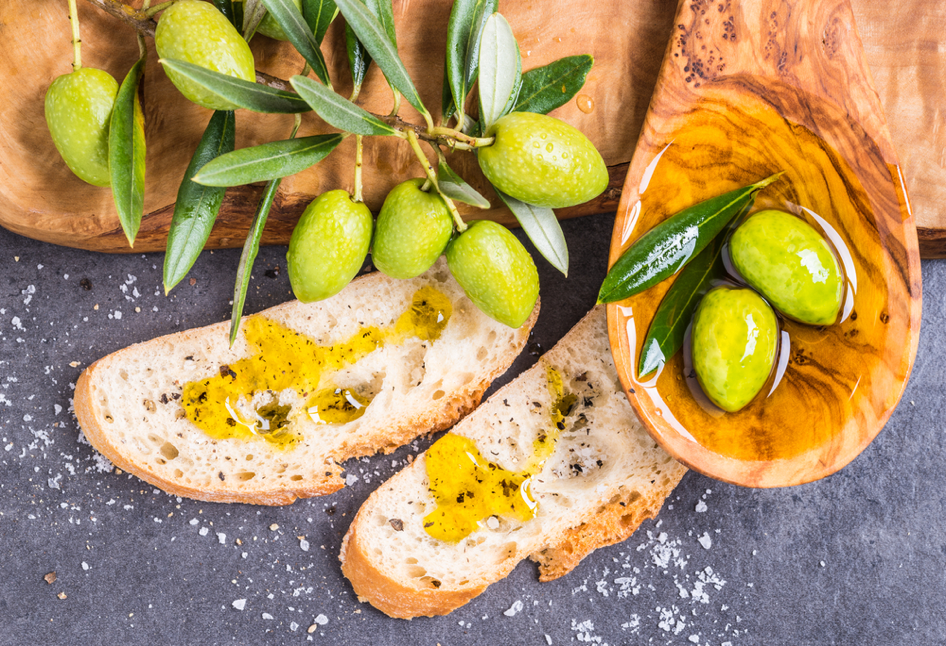To the uninitiated, olive oil may not seem like much – an innocuous golden salad dressing, or something to fry your chips in if you’re feeling fancy. But Italians know that olive oil is something much more profound – it’s the staple of Italian cooking, and it has as many different flavours, textures, and aromas as our cured meats or cheeses do. It’s a magical elixir, which is used for everything from preserving lush, flavourful antipasti, to unlocking the flavours of crunchy dipping breads and fine crackers.
But why is olive oil so important in Italian cooking, and how can you tell the difference between a poor-quality, refined olive oil and an exceptional extra-virgin preparation?
A Brief History of Italian Olive Oil
Olives have been pressed to make olive oil since around 3000 B.C.E, originating in Syria, and spreading to Ancient Greece, eventually reaching Sicily and Southern Italy around 1200 BC. The exact date at which the precious tree made it to Italy is hotly contested, with some claiming it didn’t arrive until as late as 6th century BC – but what is beyond contest, is the importance of Italian Olive Oil today.
Not an easy fruit to harvest, growing high-quality olives is a time consuming business, requiring constant pruning, digging and fertilising – but over centuries, Italians have honed the skill of achieving the perfect yield, as the plant thrives especially well by the warm, salt-watery air of the Mediterranean Sea.
Once the fruit is ripe, it undergoes an exacting process to be transformed into oil – the fruit must be handled carefully to avoid bruising, so, during picking, nets are often used to catch the olives before they hit the ground, and they must be carefully transported. All stems and debris must be removed before the olives are washed, ground into a paste and pressed with water, to extract the oil within.
Different Pressings and the Qualities of Italian Olive Oil
This is where choosing the finest olive oil can get complicated – labels announcing the oil contained within is “first pressed” “virgin” “extra-virgin” or “cold pressed” can leave the consumer confused about which is superior. But, simply, extra virgin olive oil is the highest quality oil – and it should always have been pressed cold, at the first pressing. Keeping the olives at a cool temperature throughout pressing ensures the compounds within are unadulterated, and this is why extra virgin Italian olive oil is the finest. Likewise, the more pressings an oil derives from, the lower quality it is – olive oil from the first pressing retains the most flavour and nutrients from the olives. Virgin olive oil is the next highest grade, and, well, as for the rest – as Italians, we wouldn’t recommend using an olive oil from a lower grade at all!
Why Is High Quality Oil So Important?
The higher quality the oil is, the better the flavour and colour, and the more important nutrients it contains, too – Italian Olive Oil is considered to be the secret behind why the Mediterranean diet is so healthy, as it contains monounsaturated fats, which help to lower cholesterol and keep your heart healthy. Good quality olive oil comes in all kinds of colours, from rich gold, to green, to a paler yellow shade – but it should smell fruity, peppery, bitter or pungent – not sour, musty, vinegar-like or stale.
At Diforti, we know that a fine Italian Olive Oil is the secret to a delicious Italian meal – which is why we only sell the highest quality extra virgin olive oils, delicately flavoured with everything from white truffles to basil and chilli. The perfect accompaniment to our carefully curated antipasti boxes, our olive oil selections make an ideal gift for foodies – and each and every one of our specially selected oils honours the traditional methods of making high quality Italian Olive Oil. If you value your healthy heart (and your taste buds!) you won’t settle for less – and that’s why we only bring you the very best.

